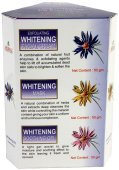Wool: 1 definition
Introduction:
Wool means something in the history of ancient India. If you want to know the exact meaning, history, etymology or English translation of this term then check out the descriptions on this page. Add your comment or reference to a book if you want to contribute to this summary article.
India history and geography
Source: Knowledge Traditions & Practices of India: Other Technologies: A SurveyWool refers to a textile that was actively produced and exported in ancient India.—By the time trade with the Roman Empire reached its peak, India was a major exporter of textiles (e.g., Wool), specially cotton and silk. The Vedas refer to various types of garments as well as fabrics such as wool (avi, śāmulya) or silk (tarpya), also to weaving and looms. India exported cotton to China, silk to Indonesia and all the way to the Far East.

The history of India traces the identification of countries, villages, towns and other regions of India, as well as mythology, zoology, royal dynasties, rulers, tribes, local festivities and traditions and regional languages. Ancient India enjoyed religious freedom and encourages the path of Dharma, a concept common to Buddhism, Hinduism, and Jainism.
See also (Relevant definitions)
Starts with (+25): Woolflower, Woolia, Woolly angelica, Woolly beachheather, Woolly betony, Woolly bluecurls, Woolly breeches, Woolly bur-sage, Woolly butterfly bush, Woolly cedar, Woolly cinquefoil, Woolly congea, Woolly cycad, Woolly dalea, Woolly distaff thistle, Woolly geranium, Woolly grass, Woolly loco, Woolly locoweed, Woolly love grass.
Full-text (+250): Urna, Angaruha, Lava, Urnanabha, Kushorna, Urnamaya, Aurna, Stuka, Urnapinda, Urnamrada, Cai, Karnorna, Bhimsa, Pinjari, Dhumorna, Uṇṇa, Pashamina, Tulapicu, Lokara, Eladuppala.
Relevant text
Search found 100 books and stories containing Wool; (plurals include: Wools). You can also click to the full overview containing English textual excerpts. Below are direct links for the most relevant articles:
Cosmetics, Costumes and Ornaments in Ancient India (by Remadevi. O.)
1. Materials for Garments (c): Woollen clothes < [Chapter 2 - Costumes]
3.6. Dress Making: Washing < [Chapter 2 - Costumes]
7. Trade and Commerce (of clothes and dresses) < [Chapter 2 - Costumes]
Manusmriti with the Commentary of Medhatithi (by Ganganatha Jha)
Verse 5.119 < [Section XIII - Purification of Substances]
Verse 11.168 < [Section XVIII - Expiation for Theft (steya)]
Verse 2.44 < [Section XIII - Initiation (upanayana)]
Vinaya Pitaka (4): Parivara (by I. B. Horner)
Monks’ Analysis: on How Many Offences? (Nissaggiya Pācittiya) < [1.2. Monks’ Analysis: on How Many Offences?]
Monks’ Analysis: on the Laying-Down-Where (Nissaggiya Pācittiya) < [1.1. Monks’ Analysis: on the Laying-Down-Where]
Vinaya Pitaka (1): Bhikkhu-vibhanga (the analysis of Monks’ rules) (by I. B. Horner)
Vinaya Pitaka (3): Khandhaka (by I. B. Horner)
Rejection of high and broad seats < [5. Leather (Camma)]
On permission for woollen garments, etc. < [8. Robes (Cīvara)]
On asking for a boon < [8. Robes (Cīvara)]
Bharadvaja-srauta-sutra (by C. G. Kashikar)
Related products





